There are many possible causes for white tongue, and in some cases, it comes with an unpleasant odor and mouth dryness. To get rid of it, sometimes you just need to brush your teeth. But what should you do if that doesn’t help?
❗ This article is for informative purposes only and can’t replace the advice of a specialist.
What white tongue is
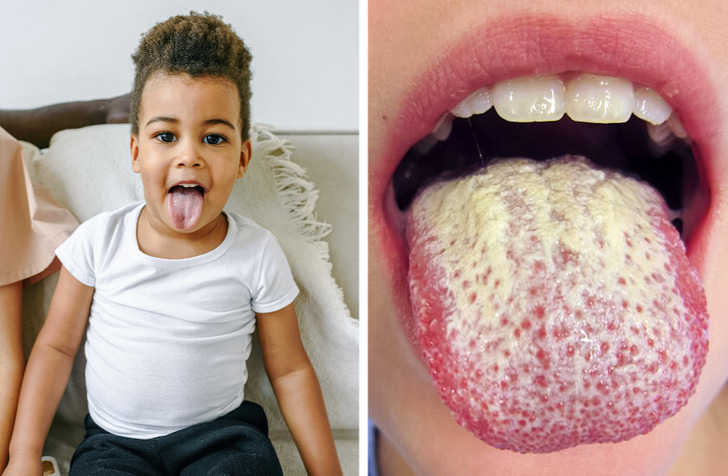
The white film may cover the entire tongue, part of it, or appear as spots. At the same time, an unpleasant odor and taste in the mouth may appear. It looks as if there are small white hairs on the tongue’s surface. In fact, they are buds covered with organic particles, bacteria, and dead cells.
White plaque on the tongue (which can also be yellow) may appear for different reasons, like due to irritation or because of an infection. It usually disappears after several days. If the situation doesn’t change for several weeks, and it’s painful to eat and talk, it’s best to see a doctor.
It’s important to note that the plaque may not only be white. While a pink tongue is normal, a brown tongue means the person drinks too much coffee or tea. A yellow tongue means there’s something wrong with the liver, and a red tongue is a sign that the person lacks vitamin B.
Why the tongue becomes white
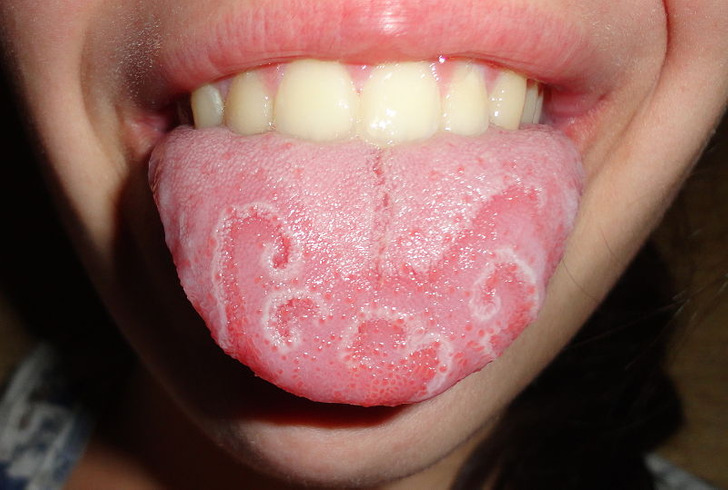
Usually, the tongue becomes white due to bacteria, leftover bits of food, or dead cells that get stuck in between the buds. Because of this, the buds may increase in size or become inflamed. This is how white spots on the tongue’s surface appear.
Sometimes, the plaque appears due to an illness. For example, the geographic tongue is also a condition where white spots appear on the tongue. It’s quite rare, and the causes are unknown, but the condition itself is often connected to eating foods that irritate the tongue. It may also be a reaction to stress, an illness, or hormonal changes.
Why white plaque appears on the tongue
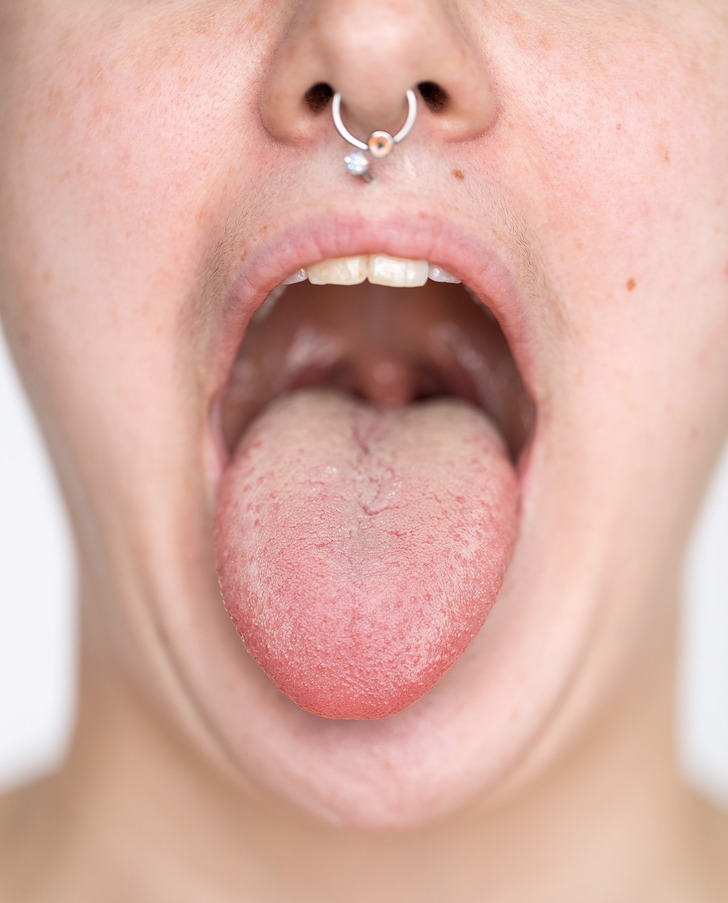
There are some things that make the appearance of white plaque on the tongue more probable:
- Age
- Taking antibiotics (white-yellow plaque appearing when there’s a fungal infection in the mouth)
- A diet that’s lacking enough fruits, vegetables, vitamin B12, and iron
- A weak immune system
- Bad mouth hygiene
- Dental prosthetics or other objects that can damage the tongue
- Dehydration and mouth dryness
What piercings have to do with white tongue
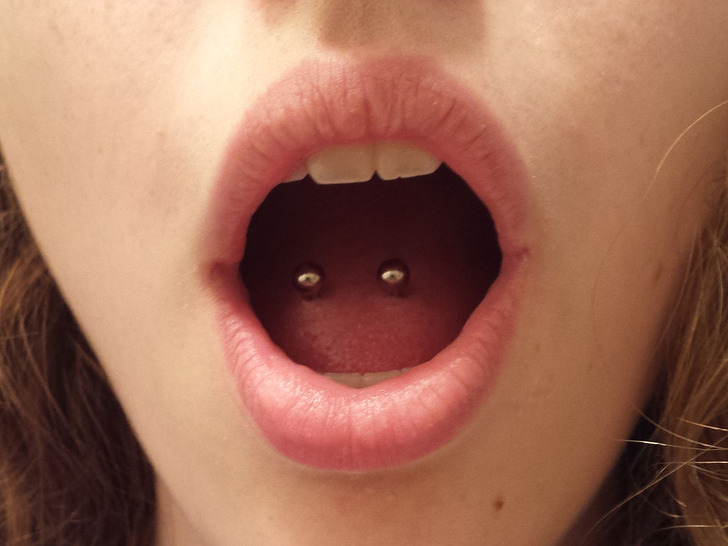
Right after piercing the tongue, there might be some white film present. This happens because the number of bacteria on the tongue increases, and it’s normal. Antibacterial mouthwash will help you get rid of it. Plus, there might be a ring around the piercings, which is normal too, and it means the tissue is healing.
If the plaque appears due to an injury (including piercings), the healing should take around 1.5 weeks. You should avoid irritants, such as hot, spicy, or sour foods and drinks.
How to get rid of white tongue at home
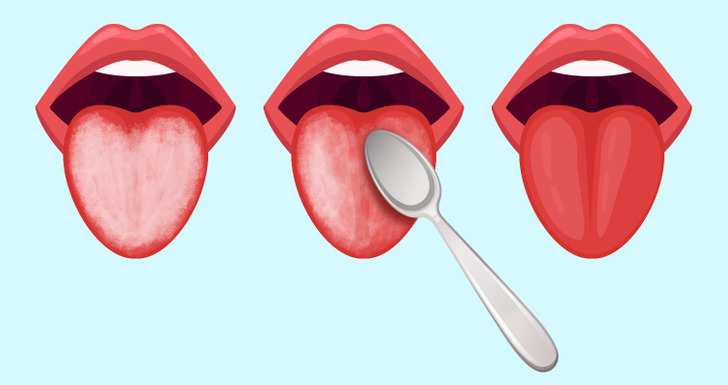
- Practice good mouth hygiene.
- Drink enough water.
- Brush your teeth using a soft toothbrush.
- Use a mild fluoride toothpaste — one that doesn’t contain sodium lauryl sulfate.
- Use fluoride mouthwash.
- Brush your tongue or use a tongue scraper to remove the white coating.
- Drink cold drinks through a straw.
- Avoid food and drinks that are spicy, salty, acidic, or very hot in temperature.
Who to talk to if you’re worried about your white tongue
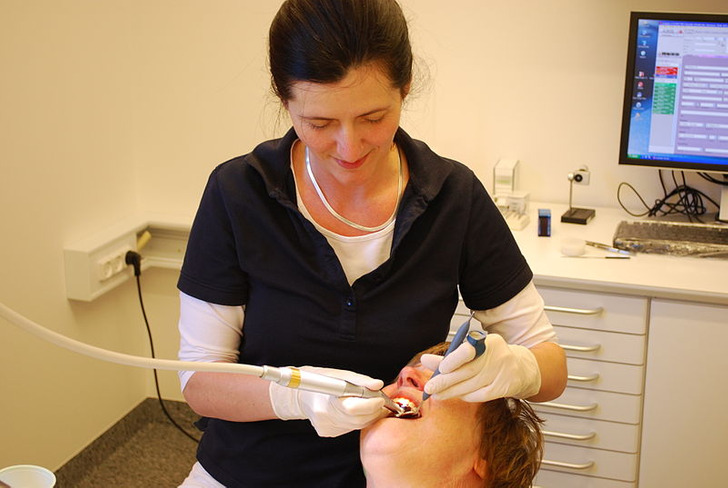
- Your dentist can help you remove the white film from the tongue and prescribe medications if needed.
- Your GP can diagnose the tongue, prescribe you certain medications and determine if the white tongue is an indicator of a more serious issue.
What do you do about white tongue?
Preview photo credit Genusfotografen (genusfotografen.se) & Wikimedia Sverige (wikimedia.se) / Wikimedia Commons, CC BY-SA 4.0, Martanopue / Wikimedia Commons, CC BY-SA 3.0
Shelter Canine ‘Best Friends’ Unknowingly Enjoy Last Day Out Together
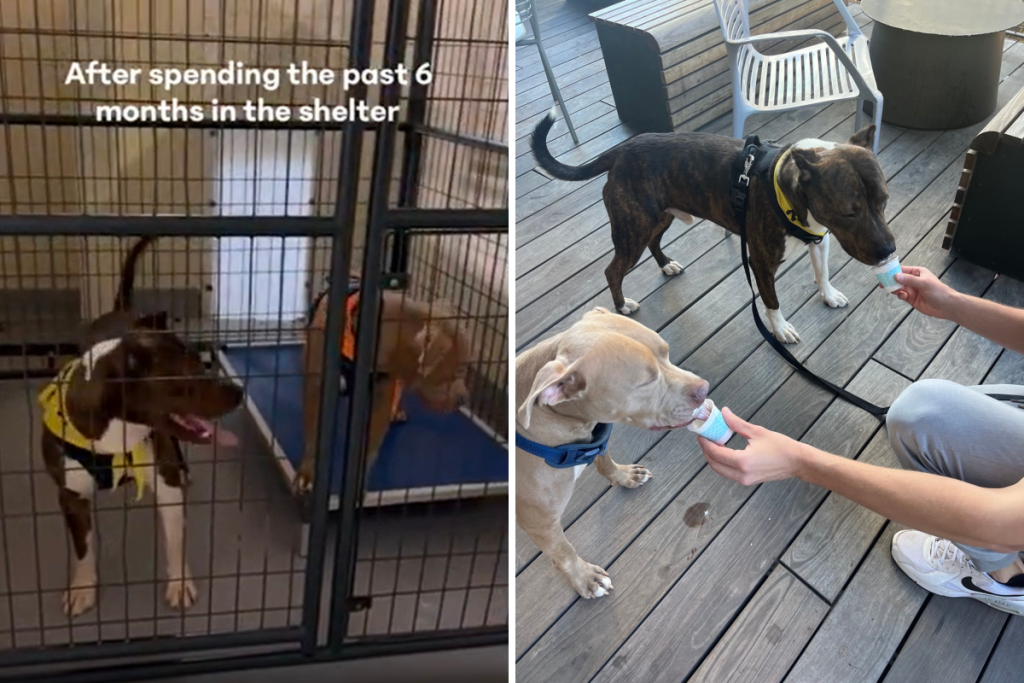
Living in a shelter can be hard for animals but these two pit bull terriers have managed to make the best out of a bad situation.
Moon Pie and Clipper, both two years old, have been joined at the hip for the past six months in Lifeline Animal Project, an intake shelter for stray dogs in Atlanta, Georgia.
Recently, Connor Abdo, an animal welfare advocate, treated the “best friends” to a day on November 5 and captured all of their fun on camera.
“The shelter is a very stressful environment for the dogs so having a friend is really helpful,” Abdo told Newsweek.

From making friends with strangers to slurping a puppuccino, Abdo said, “they had the best day ever.”
The video was uploaded to Abdo’s dog supply business, @salvation_bark, on TikTok, where shelters receive a donation of half the proceeds.
During the video, the pair can barely contain their excitement as they smile while riding in the back of Abdo’s car. It soon becomes clear that they weren’t shy and are willing to greet everyone they meet.
“They are the definition of you can’t judge a book by its cover. They are both big softies who love kisses, other dogs, and playing,” Abdo said.
However, the video has a bittersweet twist because it’s the final time the tan and white dog, Clipper, will play with Moon Pie, as he has since been adopted.

“It is sad for Moon Pie that his friend is gone but we are confident he will be adopted soon. It is difficult to find an adopter willing to take both dogs though.
“Moon Pie would thrive in any environment. He’d love a dog friend,” Abdo said.
So far, the clip has over 6,000 views and more than 1,000 likes along with plenty of comments.
One user said: “I’m a volunteer and I do this for all the long term dogs at a local shelter. They needed that much needed break from the shelter. So thank you!!!”
Another pointed out: “They seem so well behaved!”
“Such softies who just need love,” said another person.
Another said: “I hope they find forever homes soon.”
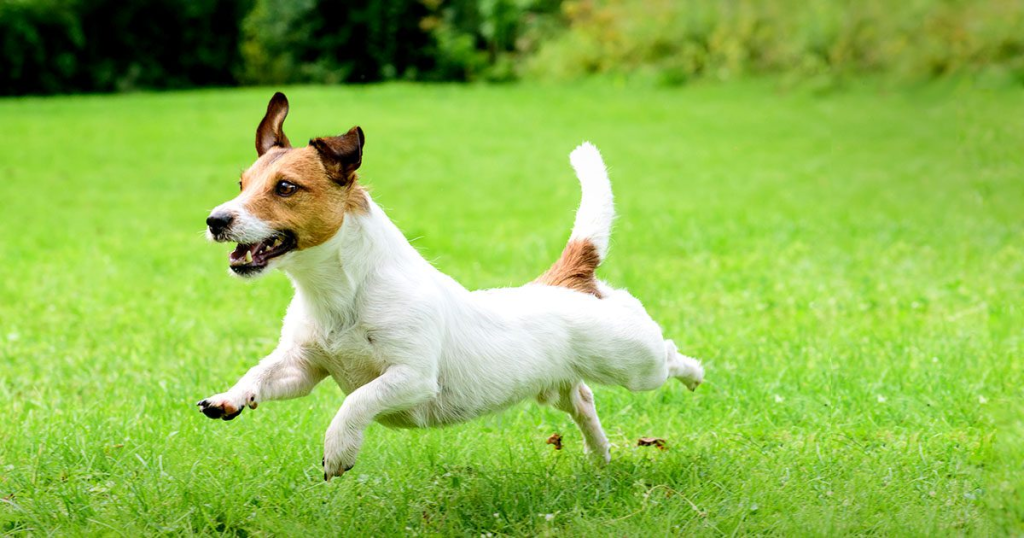
Recently, a shelter volunteer showed the reality of living in a shelter for one dog who is yet to be adopted after 1,058 days. But dreams do come true, as proven by Nova, a dog who has finally found a loving family to call her own after more than two years in a shelter.
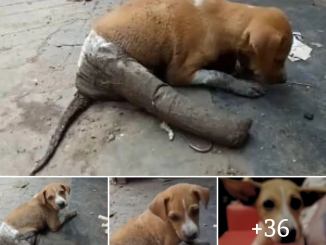

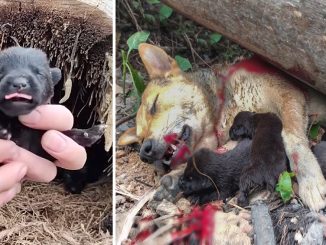
Leave a Reply